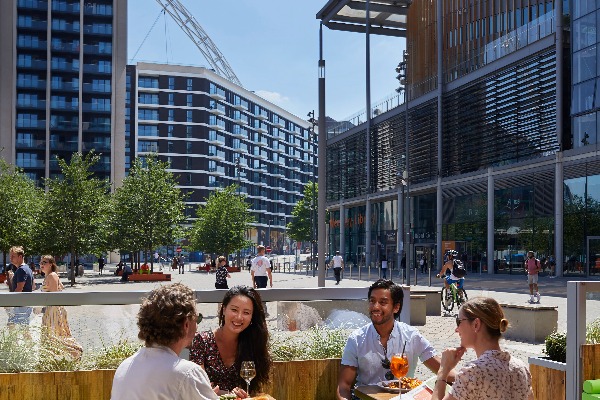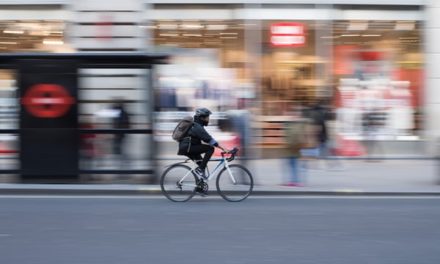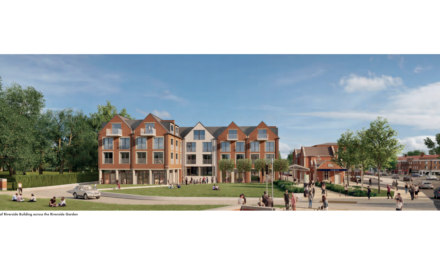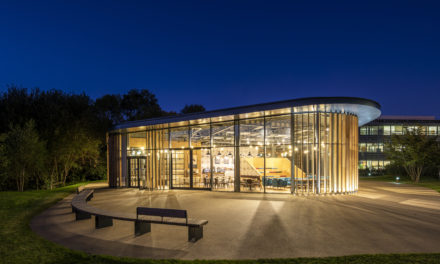The Mayor of London, Sadiq Khan, has announced pioneering new rules to ensure that significant new developments in the city help to clean up the capital’s air.
The new Air Quality Positive (AQP) guidance is a groundbreaking new approach requiring developers of large-scale developments to consider their impact on air quality from the earliest design stages. Instead of designing the development and then assessing and mitigating any increases in local air pollution, developers and their architects, planners and air quality experts are expected to consider air quality at every design stage, in addition to demonstrating what measures or design features will be put in place to reduce exposure to pollution.
The Mayor announced New Air Quality Neutral (AQN) guidance as well. The AQN guidance expects all new developments in London to not contribute to air pollution beyond specified benchmarks. As well as driving down emissions across the board, the benchmarks make it much harder to use the most polluting fuels, meaning new and refurbished properties in London cannot use wood or other solid fuels for heating.
In Wembley, a new Transport for London (TfL) development, Wembley Park Gardens, working with Barratt London, has already met the new AQN benchmarks. The development by Wembley Park station will not only improve the air quality in the area by reducing the reliance on car travel and encouraging sustainable transport but also by incorporating other sustainable features, such as solar panels, an electric heating system with air source heat pumps, cycle storage for residents and electric vehicle charging. There is also an overall biodiversity gain, including green and biodiverse roofs, planting new trees and hedges, and wildlife-friendly landscaping.
Buildings in London are responsible for nearly 80 per cent of London’s carbon emissions. They are significant sources of other pollutants, such as nitrogen dioxide and particulate matter, which directly impact the health of Londoners. The Mayor’s 2021 London Plan sets the agenda for the city’s development for decades to come and includes key policies to address the climate emergency and the housing crisis and to help ensure London becomes a greener and healthier city for all Londoners.
The Mayor of London, Sadiq Khan, said: “Toxic air is a matter of life and death, causing around 4000 premature deaths every year in London and leading to asthma in the young and dementia in the elderly. I have made it a top priority as Mayor to tackle London’s air pollution and the climate crisis. The ULEZ has cut transport-related air pollution by 44 per cent in central London and carbon emissions by six per cent. But we must also cut carbon emissions and air pollution from new developments.
“Now, thanks to my London Plan, developers will have to put air quality and carbon emissions at the heart of their projects from the very beginning and build their developments more sustainably. This will help us to continue building a better, greener London for everyone.”
Emma Hatch, head of ESG at TTL Properties (TfL’s wholly owned commercial property company), said: “We are proud to be working alongside the Mayor of London and other developers to make our city a greener place to live, work and travel in, while also delivering the homes and places that London urgently needs. Our development by Wembley Park Tube station, working with Barratt London, is a shining example of how we incorporate sustainability as a core part of our designs. It is vital that we drive positive social impact, promote economic development, and embody environmental stewardship across our developments, as exemplified in both these updated standards and TTLP’s own Sustainable Development Framework.”
Stephen Thompson, managing director of Barratt East London, said: “We want to be a leading national sustainable housebuilder, and air quality is an important part of that. Wembley Park is a good example of bringing together lots of different sustainable elements that combined to minimise pollution and maximise air quality. Heat pumps, solar panels, and biodiverse roofs are good examples of this which, together with the excellent transport infrastructure at Wembley, all helps to promote sustainable lifestyles.”
© London West (powered by ukpropertyforums.com).
Sign up to receive our weekly free journal, The Forum here.








